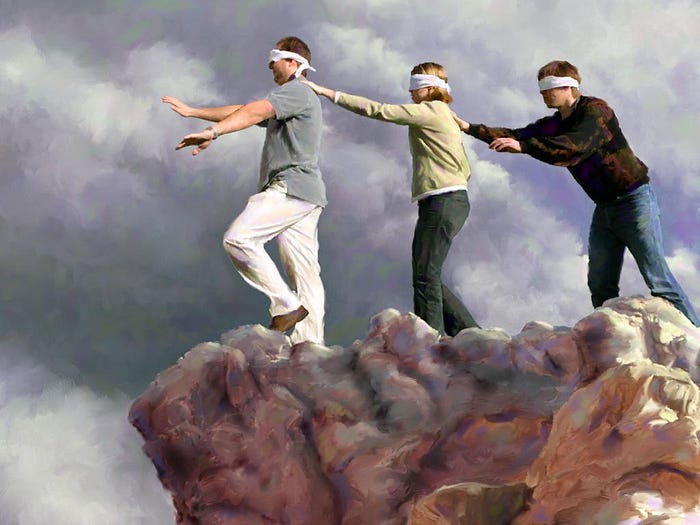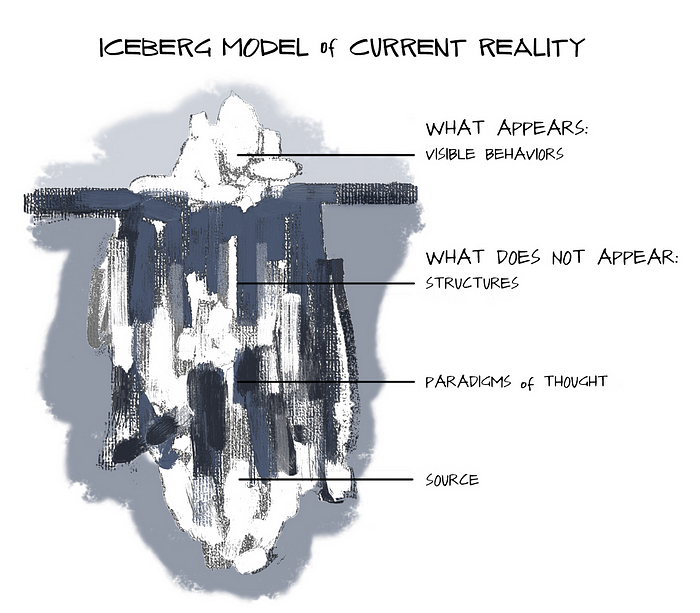Leading in Complex Times. The Blind Spot of Leadership

Those leaders failed to see, care, and act on a deadly systemic crisis that disregards national borders, human races, and economic status that not only infects and kills the most vulnerable people but also disrupts every human endeavor on the planet.
This is the second part of a series where I explore the VUCA world from another perspective. The first article of this series was “Leading In Complex Times. From VUCA to Complexity”. In that opportunity, I argued that the word “Complex” contained the meaning of the other three words of the acronym VUCA, “Variable, Uncertain, and Ambiguous,” because they are a manifestation, a result, of the former.
COVID-19 is a Leadership Crisis
A deadly virus causes COVID-19, and a pandemic was going to occur due to its spread capability. Nevertheless, the inept leadership shown by most heads of state has turned it into an out-of-control worldwide deadly epidemic. With very few exceptions, their response to the crisis offers different degrees of institutional irresponsibility. To illustrate, most of them treated the infection as a regional or national problem, not a global issue, not seeing the consequences of their actions and inactions. Above all, they did not consider that human lives were at stake, and if they did, they did not care and did not act accordingly, putting their political interests before the lives of their constituents.
Those leaders failed to see, care, and act on a deadly systemic crisis that disregards national borders, human races, and economic status that not only infects and kills the most vulnerable people but also disrupts every human endeavor on the planet.
Like in the children’s story “The Emperor New Clothes,” COVID- 19 has put a magnifying glass on the ugly nakedness of our leaders, as they empirically showed their incompetence in leading in complex times. After eight months, COVID-19 has infected 16,650,000 and killed 650,000 people worldwide; worse still, its end is nowhere to be seen. The blind spot of leadership is now evident to everyone.
Understanding Complexity
“Managers are not confronted with problems independent of each other, but with dynamic situations that consist of complex systems of changing problems that interact with each other. I call such situations messes. . . Managers do not solve problems; they manage messes.” Russell Ackoff.
If you look at the key characteristics of Complex Systems, you will see the virus crisis reflected in most of them. Even when some of those leaders may frame the problem within a larger context, they still think that their sole decisions will influence the crisis outcome. In her article, “7 Differences between complex and complicated”, Sonja Blignaut, from Cognitive Edge, writes:
“…as long as decision-makers believe they are dealing with complicated systems, they will assume they can control outcomes, find solutions to problems and waste a lot of money on expert consultants to give them the “answers.” For organizations to become more resilient and sustainable, business science has to move beyond its Newtonian foundations towards an understanding of complexity.”
What business, political, and social leaders need is a whole new set of competencies to face a complex world successfully, the first of which is “Systems Thinking.”
Systems Thinking. The Fifth Discipline
Peter Senge, in his book “The Fifth Discipline,” states the five disciplines of a learning organization:
- Personal Mastery. It is a discipline of continually clarifying and deepening our vision, focusing our energies, developing patience, and seeing reality objectively.
- Mental Models. They are deeply ingrained assumptions, generalizations, or even pictures of images that influence how we understand the world and how we take action.
- Building a shared vision — a practice of unearthing shared pictures of the future that foster genuine commitment and enrollment rather than compliance.
- Team learning starts with dialogue — the capacity of members of a team to suspend assumptions and enter into genuine thinking together.
- Systems Thinking — It is the “Fifth Discipline” that integrates the other four.
Systems Thinking. The Three Divides
“Like the tip of an iceberg, the symptoms of our current situation are the visible and explicit parts of our current reality. The level of the symptoms includes a whole landscape of issues and pathologies that constitute three divides: the ecological divide, the social divide, and the spiritual divide.” Presencing Institute.

In his book, Essentials of Theory U, Otto Scharmer, in his book, Essentials of Theory U defines the three main divides of our time. They are:
- The ecological divide: unprecedented environmental destruction — resulting in the loss of nature.
- The social divide: obscene levels of inequity and fragmentation — resulting in the loss of society — the social whole.
- The spiritual divide: increasing burnout and depression — resulting in the loss of meaning and the loss of Self. With the capital ‘S,’ Self means not the current ego-self but our highest future potential.
Systems Thinking. The Iceberg Model
“The iceberg model is a tool of systems thinking. It suggests that beneath the visible level of events and crises, there are underlying structures, paradigms of thought, and sources that are responsible for creating them. If ignored, they will keep us locked into re-enacting the same old patterns time and again”. Presencing Institute.

The Blind Spot of Leadership
If we dive to the bottom of the iceberg, past the structures and paradigms of thought that cause visible behaviors, we find the “Source.”
The “Source” is the “Self” and its relation with nature, others, and our beings. Otto Scharmer calls it “the blind spot of leadership.”
To transform the paradigms of thought and the structures that keep producing results that nobody wants, Systems Thinking gives us the What, but we access the How through Systems Consciousness.
The following articles explore the high failure rate in business transformations, explaining the relationship between Business Agility, Complexity, Leadership, Corporate Culture, and Business |Processes. Read them here:
